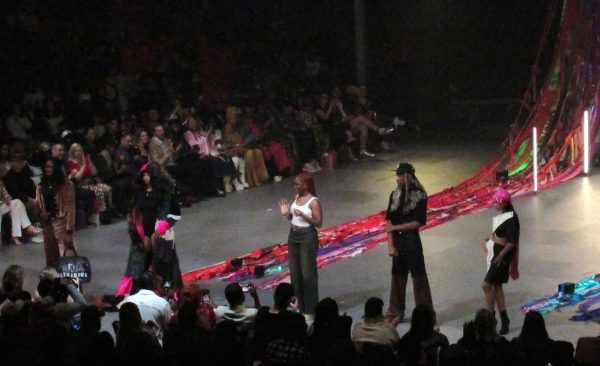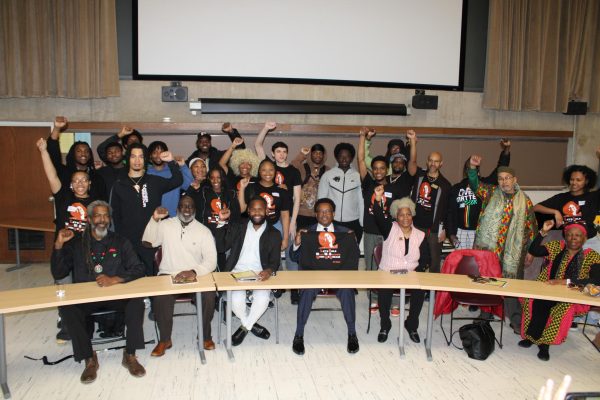Opinion: Journalism’s problems of today aren’t so different from 70 years ago
Prior to 2016, newspapers’ top concerns were citizen journalists in the rise of social media, or falling print subscriptions with increased online access to the news. While those are still up there, the media now faces constant scrutiny, to put it lightly, from American citizens all the way up to the President of the United States.
While these specific issues might seem relatively recent, the heart of them is not. It’s hard to predict things like the rise of the internet or a Donald Trump presidency, but the media faces some of the same issues that were once battled over in 1947.
Setting the scene: It’s 1947, the country was fresh out of World War II, a mere decade or so out of the Great Depression. Television hadn’t been around for long, and the first television news show “Meet the Press” debuts this year. Over 50 million weekday newspapers circulated to American households, more than 15 million more than today. Print and radio were the main channels of communication between journalists and American citizens.
In 1947, Time Magazine founder Henry Luce gave over $200,000 in grants to create a committee that would assess journalism and make critical suggestions on what present and future problems it faced. Luce asked Robert Hutchins, president of the University of Chicago, to head the commission which featured 12 intellectuals, none of them journalists. The Hutchins Commission was born.
The Commission found that the freedom of the press was in danger.
Information monopoly
Their major concern? The press was in danger of falling into the hands of few owners so that only a select few executives were in charge of how information was distributed to an entire country of people.
Back in 1947, 80% of newspapers were independently owned. In 1983, 90% of the American media was owned by 50 corporations. Today, six corporations own the same amount of media.
According to Business Insider, roughly 232 business executives “control the media diet” for all Americans.
An information monopoly is dangerous. Journalism is a business, and at the end of the day, businesses need to profit. Publishing the story faster than competition is often a requirement for journalists, but this can lead to errors. Needing to garner more online traffic can lead to click-baity headlines that may not portray the story accurately, but at least it’ll get more shares and clicks, therefore generating more money.
Rise of social media influencing journalism
What the Hutchins Commission could not possibly have predicted or accounted for in 1947 was the rise of social media. Specifically, the sheer amount of people who consume everything they know about the current state of the world through articles their friends share on Facebook or Twitter. According to Pew Research Center, two-thirds of Americans get at least some of their news from social media sites. Over 50% of Americans age 50 or older consumer their news via social media, which is a 10% increase from just last year.
Facebook has come under fire since the end of the 2016 Presidential election for their News Feed algorithm. The algorithm, which they spent years fine-tuning, shows Facebook users what they want to see. Facebook monitors pages you like, political posts you like, memes you like and tailors your News Feed to show exactly what they think you want to see and agree with and nothing else.
A healthy media diet consists of news from different outlets. Outlets that lean right, outlets that lean left and ones that are relatively unbiased. When over two-thirds of Americans are relying on their Facebook feeds to stay informed and it’s only showing them the viewpoint they already agree with, they’re not really getting informed. Their preconceived opinions are just getting reinforced. My News Feed could look nothing like your News Feed. The way I see the world could start to get drastically different than another person with a different News Feed.
Forbes says that Facebook relies on this algorithm to keep people addicted to their site. If people start seeing news they don’t like or agree with, they close the app or check it less, and Facebook becomes less profitable.
Facebook is a greenhouse for the weed that is fake news. Articles from opinion websites such as Breitbart or personal blogs look no different than New York Times articles. For the media illiterate, it is hard to tell whether the information is coming from a credible source bound by libel laws or a website with a nice layout and a Facebook page with a lot of likes.
Facebook won’t admit they’re a media company. But aren’t media companies distributors of the news? And isn’t Facebook one of the leading news distributors?
Media bias
The Hutchins Commission knew that the media needs to accept the responsibility of communication. Being the main source of communication between newsworthy events and the people comes with a lot of responsibility. One responsibility is to be truthful and unbias. The number one rule of journalism is to report the truth– but what happens when the media doesn’t hold up their end of the bargain?
The Pew Research Center conducted a study in 2014 looking into political polarization and media habits of Americans. The study focused on the ideological perspectives of its audience and placed them on a scale, leaning both right and left. They found that liberals had far more news organizations that they trusted than conservatives. In fact, conservatives pretty much only had Fox News. After Fox News, conservatives cited Breitbart, Rush Limbaugh, Sean Hannity and Glen Beck, which are all opinion websites, radio or television shows, not news. Wall Street Journal and Yahoo News fell right in the middle. NBC, ABC, CBS and Bloomberg fall slightly left. NPR’s and New York Times’ audience are shown to be as far left on the scale as satire shows like The Colbert Report and The Daily Show.
The Hutchins Commissions made four final recommendations for how the media can effectively broadcast the news.
As carriers of the news, the Hutchins Commission stated that media should give a “truthful, comprehensive account of the day’s events in a context that gives them meaning.” When looking into media bias, the line needs to be drawn between giving the news context and stating an opinion. Context is looking at previous history and applying that to news for the consumer. There is a hard difference between context and fact.
The media was also expected to “open a forum for exchange of comment and criticism.” Whether it is letters to the editor, radio callers or Facebook commenters, the media does open up pathways for discussion. With social media, possibly now more than ever.
The Commission also recommended the media is a “means of projecting the opinions and attitudes of the groups in a society to one another.” The news isn’t just about reporting the facts. It’s also about reporting how people interpret the facts. Op-ed columns and roundtable discussions are crucial to media outlets because they help make sense of the news. Journalists report the facts but they can’t be the experts too. Media organizations find experts in the field to make informed conversation and open discussions.
Lastly, media should be “a way of reaching every member of the society by the currents of information, thought, and feeling which the press supplies.” The media relies on logos (logic), pathos (emotions) and ethos (credibility). All three of those are necessary to tell a story, which is essentially what journalism is. To tell a story well, you need logical facts, human interest and trust. If journalists have those three things, they’ll tell the story that needs to be heard.
The Hutchins Commission’s media concerns seem to still be relevant today. The technology has evolved and the way journalism is delivered has changed, but much remains the same. Maybe these are problems with storytelling that may never go away. People are always going to view the world differently. Some of our greatest strengths as a country are our freedoms of speech, press and assembly. Journalism owes it to our democracy to tell the story– and get it right.

Francesca Bond is an undergraduate student at SUNY Buffalo State. She has a major in Journalism and a double minor in Sociology and Political Science....








